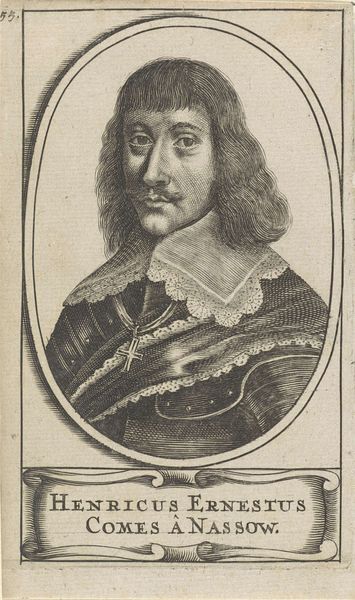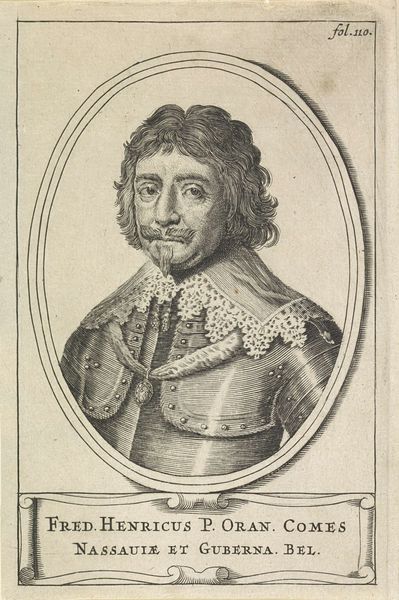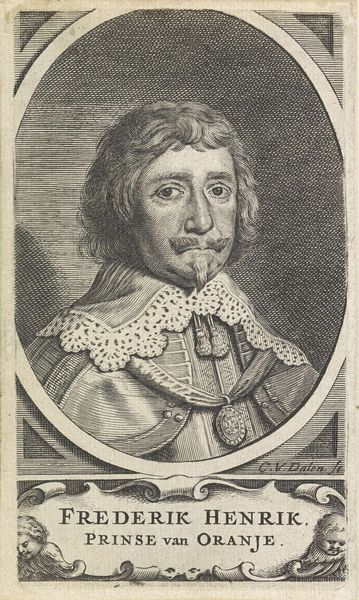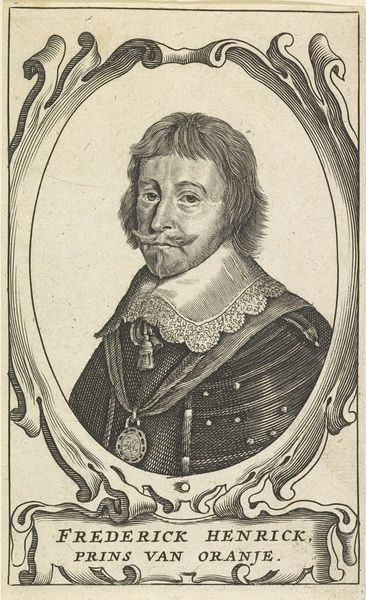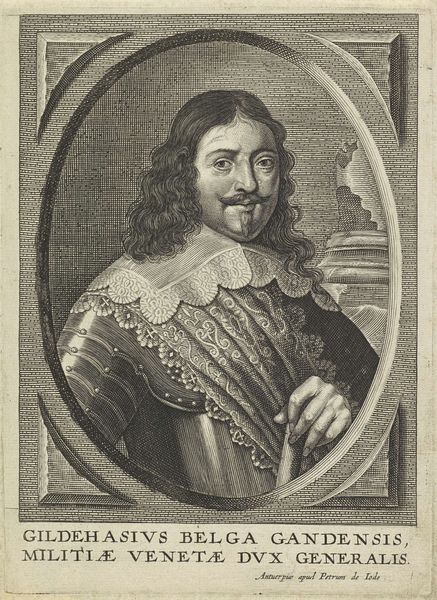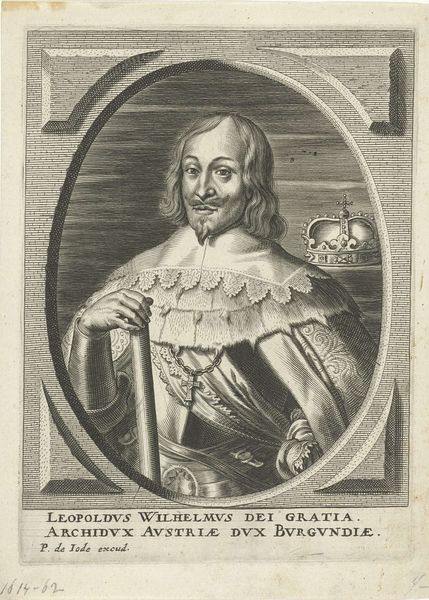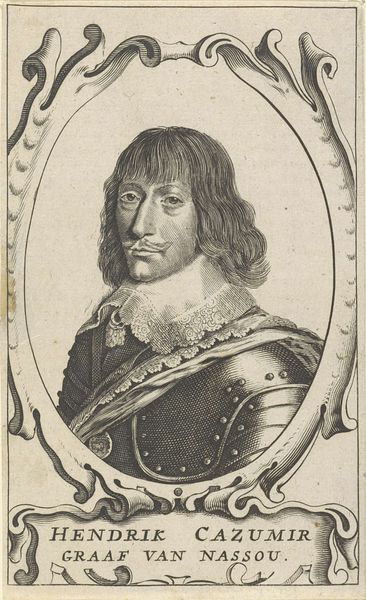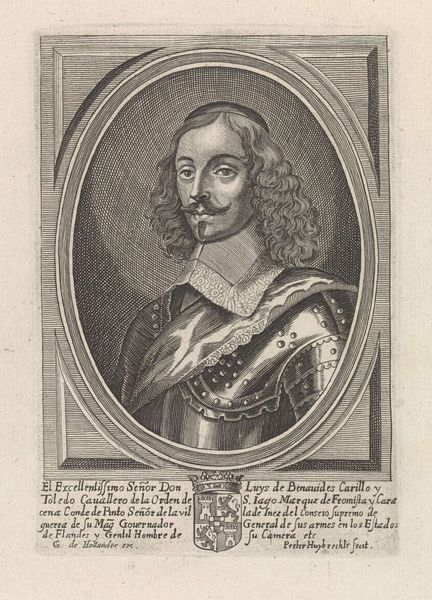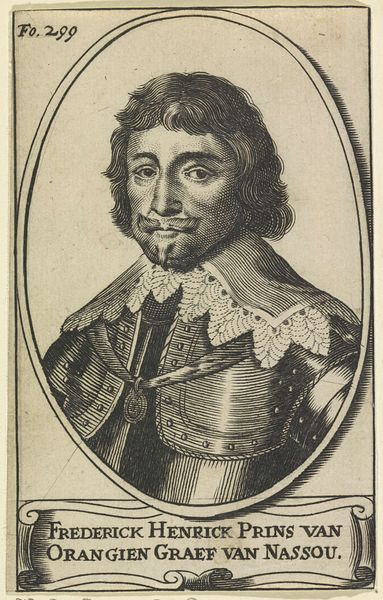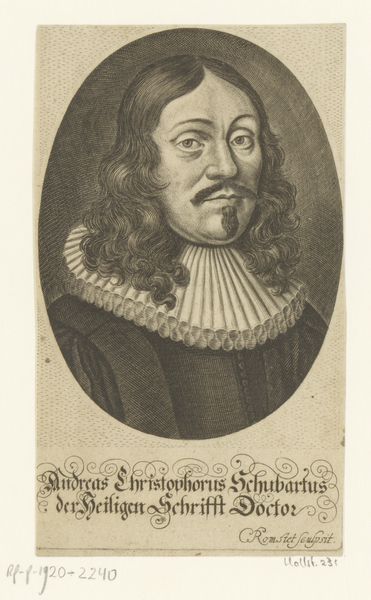
print, engraving
#
portrait
#
baroque
# print
#
old engraving style
#
figuration
#
portrait reference
#
portrait drawing
#
engraving
Dimensions: height 121 mm, width 70 mm
Copyright: Rijks Museum: Open Domain
Curator: This engraving, currently held in the Rijksmuseum collection, presents a "Portret van Willem Frederik, graaf van Nassau-Dietz". Its creation is attributed to an anonymous artist and the dating of the piece falls somewhere between 1630 and 1699. Editor: Immediately, I’m struck by the intricate detailing achieved solely through line work. It creates a powerful contrast, a sort of austere elegance in monochrome. The oval frame and lower cartouche feels very proper. Curator: The choice of engraving is fascinating when contextualized within the culture of disseminating images of power and nobility at the time. Engravings allowed for wider circulation. Consider the political and social landscape in which these portraits were produced. Reproducibility equated to greater accessibility to and, therefore, recognition by various segments of the populace. Editor: And think of the symbols employed here! The armour, of course, speaks volumes. It's a clear declaration of martial strength and nobility. Notice the delicate lace collar too? The contrast between military might and refined aristocracy provides such complex insight into his identity. Curator: The use of armour could be read beyond its martial context. Consider its manufacture – the skilled labor, the mining of resources, the entire material process behind this single representation of power. Each element conveys class, profession, or some kind of status, reinforcing the importance of social structures during that period. Editor: True. It's a very controlled and crafted image. Each line is there to send a very specific message about lineage, leadership and what the sitter represents within the social order. You see it everywhere from the specific drape of the hair to even the lettering below which spells out Wilhelmus Ernestus. The symbols almost narrate a kind of script about who this man is. Curator: Seeing this image now prompts us to consider printmaking, accessibility and class. The act of mechanical reproduction alters our understanding of this portrait’s role, of this noble individual's projected importance, and how images once operated within society. Editor: Exactly. Peeling back the layers of symbolism really allows one to understand better how such figures fashioned their identities within the visual language of their era. Curator: It offers more than a historical likeness. It provides a tactile link to systems of power. Editor: Absolutely, a rich encoding that time and thoughtful interpretation begins to reveal.
Comments
No comments
Be the first to comment and join the conversation on the ultimate creative platform.
